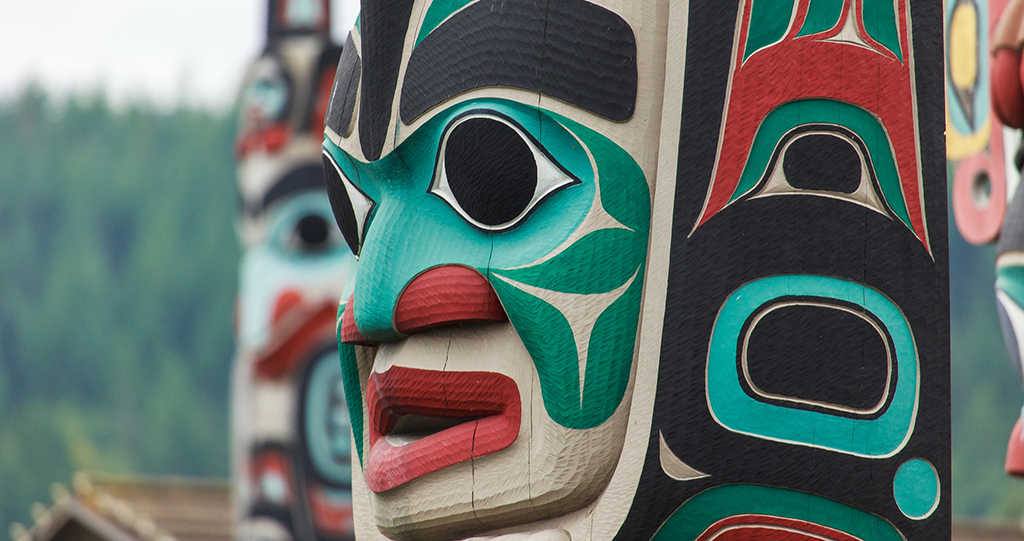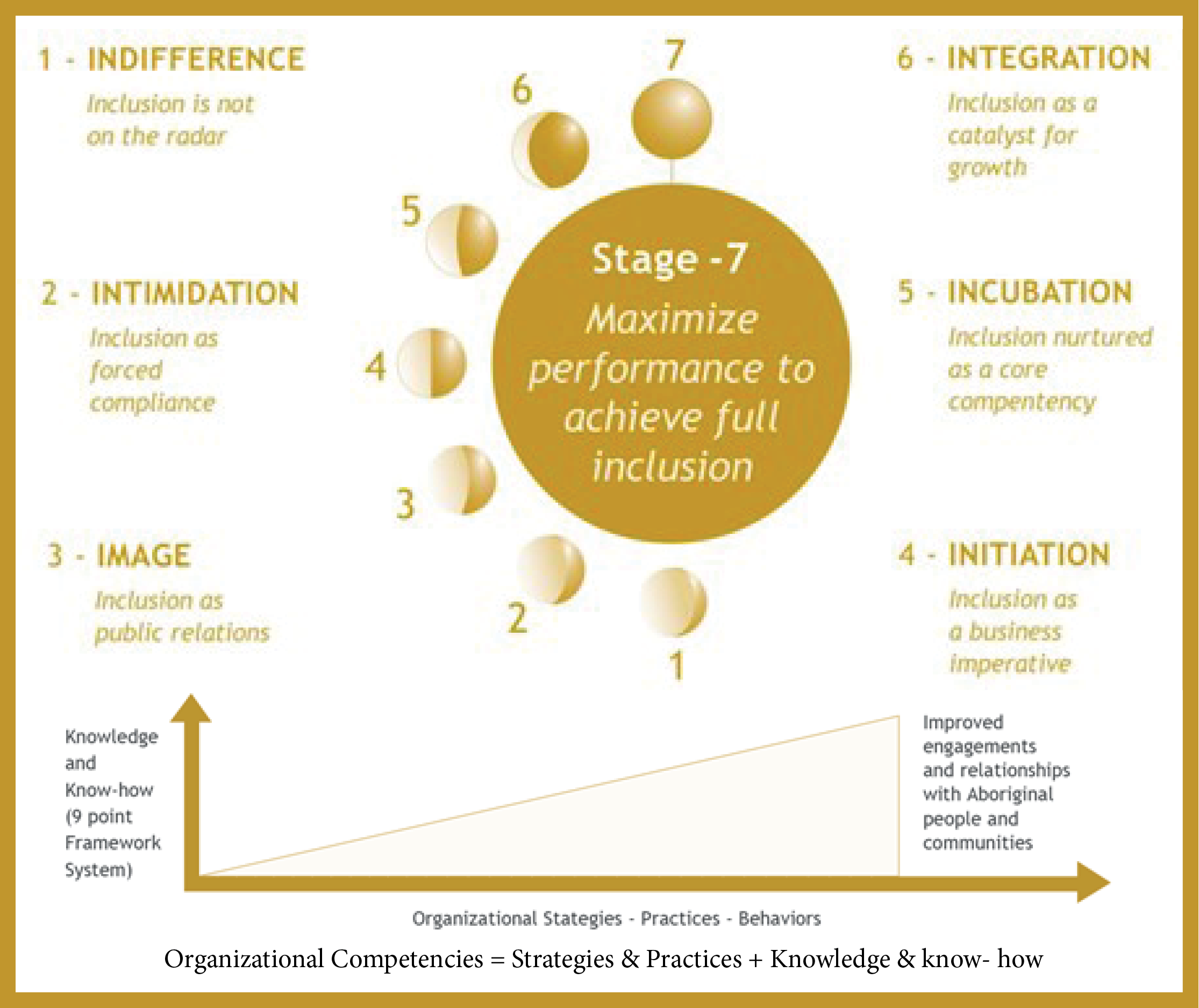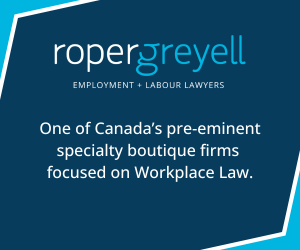Growing A New Era of Indigenous Inclusion
The recent discovery of 215 childrens’ graves at the former site of the Kamloops, B.C. Indian Residential School, located on the traditional territory of the Tk’emlúps te Secwépemc, and another discovery of a possible mass grave at the site of the Brandon, Manitoba Indian Residential School is reminding Indigenous people of their horrific past and simultaneously hitting a nerve with Canadians, with 49 per cent saying they have a new appreciation of the damage done by residential schools.
Results of a survey released by the Canadian Race Relations Foundation (CRRF), the Assembly of First Nations (AFN), and Abacus Data, expose glaring gaps of knowledge and education related to Canada’s history and renew calls to re-examine questions around who should be held accountable. Polling results identify that 93 per cent of Canadians are aware of the discovery of remains at the site of the Kamloops Indian Residential School, with 58 per cent of Canadians following the news closely.
The report of Canada’s Truth and Reconciliation Commission, released in December 2015, laid out a blueprint for addressing some of the mistakes of the past through its “Calls to Action” to various sectors of society, including ‘corporate call to action #92’. It also included three calls to action for “Missing Children and Burial Information” that are not yet started including action on children’s burial location, commemoration ceremonies and markers and reburial (#74); implement strategies and procedures for the ongoing identification, documentation, maintenance, commemoration and protection of residential school cemeteries (#75), and adopt strategies around residential school cemeteries in accordance with Indigenous-led principles and protocols (#76).
The TRC report laid out a blueprint for addressing some of the mistakes of the past through its “Calls to Action” to various sectors of society, including the corporate community. Yet a report
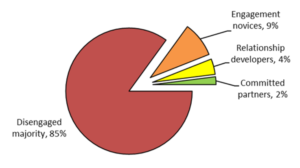
released in October 2017 by Indigenous Works based on surveys of 500 businesses, shows that 85% of Canadian businesses have no strategies or engagement practices in place and lamentably, only one in four respondents (28%) recognized the TRC corporate calls to action.
The average engagement score was a dismal 13% (13/100). However, the most engaged companies were in the resource sector scoring in the 60’s – 80’s. Many of these resource-based firms have been ‘engaged’ with Indigenous communities, business, employment, and community development for the last ten to forty years.
HR Professionals as a Catalyst for Action
So as an HR professional, what can you do?
TRC Call to Action 92 urges the corporate sector “to adopt the United Nations Declaration on the Rights of Indigenous Peoples as a reconciliation framework;” to commit to “meaningful consultation … before proceeding with economic development projects;” to ensure “that Aboriginal peoples have equitable access to jobs, training, and education opportunities in the corporate sector, and that Aboriginal communities gain long-term sustainable benefits from economic development projects,” and to train “management and staff on the history of Aboriginal peoples” as well as on “intercultural competency, conflict resolution, human rights, and anti-racism.”
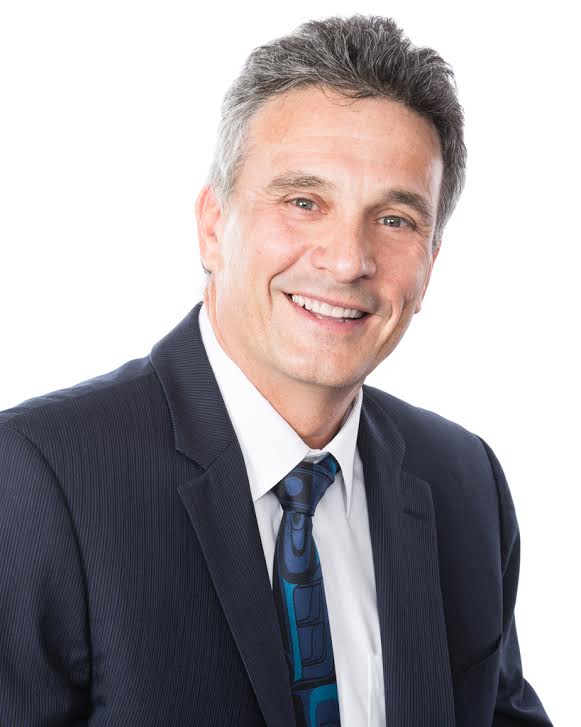
Kelly Lendsay will be a keynote speaker at the Upside of People, HR Conference & Expo on Sept. 27-28, 2021.
The TRC is a deliberate and purposeful strategy with two components—the truth side and the reconciliation side. The majority of Canadians have not learned the history and contributions of Indigenous people mainly because it was absent from most school’s curriculum, with the exception being some lessons on the fur trade.
The truth side involves knowing about such historical chapters as the residential schools, where Indigenous children who had been separated from their families and cultural ties were often abused; the “Sixties Scoop”, which saw many Indigenous children taken unwillingly from their homes for fostering or adoption, and the RCMP’s cull of valuable sled dogs in Inuit communities between the 1950s and 1970s, and Project Surname, which replaced Inuit names with numbers imprinted on leather tags. These efforts collectively destroyed identities, culture and lifestyles.
This is not about shame and blame, but more about learning our historical truths which continue to impact the lived experiences of people today—after all, we must remember that all or these horrific incidents have occurred in the past 75 years and are still fresh in many Indigenous people’s minds.
The reconciliation side is an opportunity to reshape and recast the relationship moving forward. It’s an opportunity to forever move away from the path of exclusion to a new path of inclusion. And therein lies the opportunity for employers who can make an enormous impact on the ‘economic inclusion’ of Indigenous people, companies, customers and communities.
Today there are compelling reasons for employers to create an Indigenous engagement strategy.
Education, employment and business growth is on a positive upward trajectory. While there are still ‘gaps’, the GDP of Indigenous households and Indigenous businesses increased from 12 billion 2001 two decades ago to an estimated 31 billion in 2021 and is expected to grow by 10 billion over the next decade. There is an Indigenous baby boom which makes up one of Canada’s fastest growing labour force, who can be aligned with the emerging skills and knowledge gaps.
So how do you prepare your workplace strategies and systems to tap into this growing Indigenous opportunity?
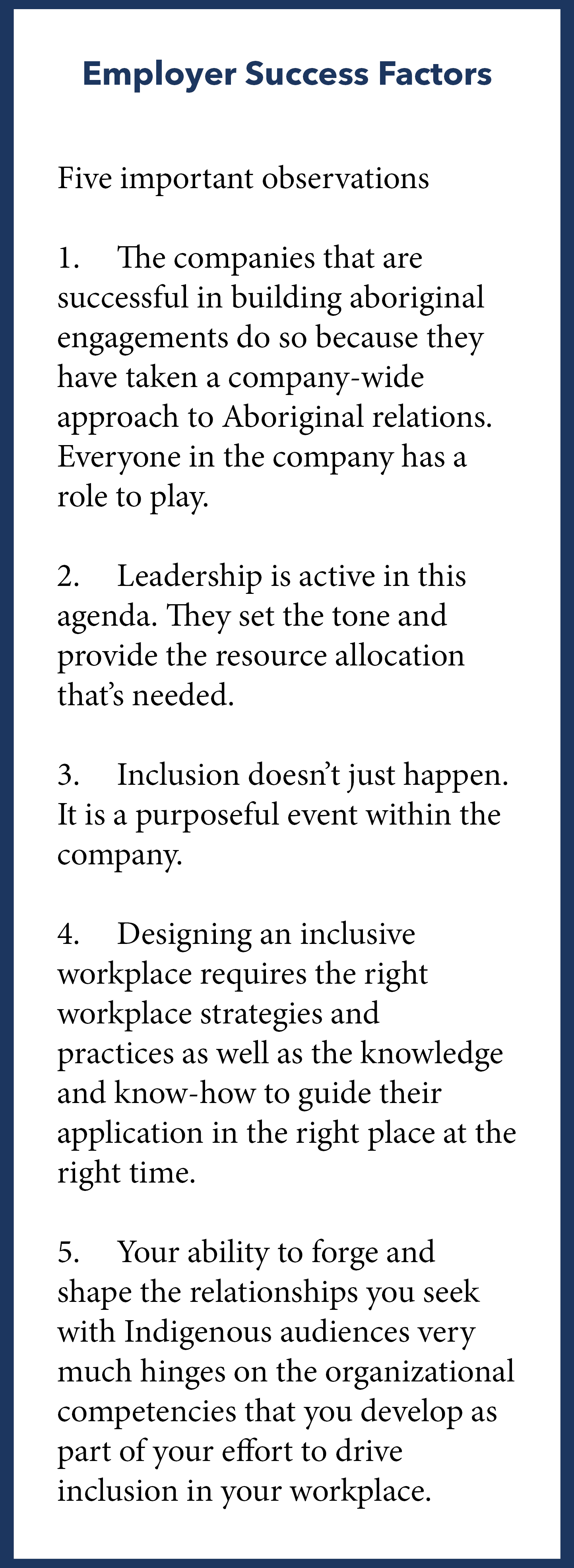
Increasing Your Organization’s Ability to Engage and Work with Indigenous People, Businesses and Communities
If your goal is to build more effective partnerships, engaging and working with Indigenous people, businesses and communities, improvements to your workplace strategies and practices are critical to growing these partnerships in new and important ways.
This means ensuring that you have appropriate strategies and practices and the right organizational competencies in place throughout your organization. It means clarity about the roles and responsibilities which management and staff can play in helping to achieve your goals to recruit and retain Indigenous people, support Indigenous suppliers and work effectively with First Nations, Métis and Inuit communities.
Systems thinking, tools and models can help employers establish a baseline measurement from which to recommend the incremental competencies your organization needs in order to climb the Inclusion Continuum and increase Indigenous recruitment, retention, Indigenous procurement, and more, but first, you should validate your existing strategies and practices and build your team’s consensus toward future efforts.
The “heart” of Indigenous Works system is seven stage proprietary model called the Inclusion Continuum. This model is used to illustrate the changes that companies make to become more inclusive, gradually enabling more effective workplace strategies and the knowledge/know-how with which to build better engagements and working relationships with Indigenous people, businesses and communities.
The Inclusion Continuum model describes the organizational competencies at each stage.
Using this model you can look at your company’s strategies and practices in each area of your workplace (i.e. HR, procurement, CSR, etc.). You examine critically and objectively, the organizational knowledge and know-how you have developed or need to develop and how you leverage those assets to guide the development and implementation of your strategies and practices.
In addition to the Inclusion Continuum, the nine Point Inclusion Framework describes the dimensions that managers need to master. Some dimensions are ‘Responsibility and Accountability, Positioning, Organizational Culture, Relationships and Trust, Leadership and Governance’ to name a few. Each dimension or indicator of the Framework references an important part of the organizational knowledge and know-how you need for your company’s workplace inclusion planning. Each dimension of the Framework supports your company’s overall inclusion activities and helps to frame an assessment of your company’s position on the Inclusion Continuum.
Becoming an Employer of Choice
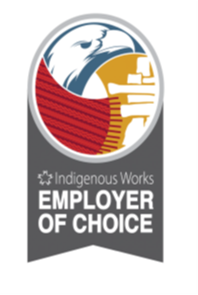 The new Indigenous Works Employer of Choice Certification Program will help guide companies of all industries and sizes in their inclusion efforts. Certification has many benefits including an opportunity to increase your brand profile; increase your opportunities to attract Indigenous talent and to develop more rigorous employment strategies, practices and system. It will help you determine how best to communicate your commitment to continuous improvement in Indigenous employment.
The new Indigenous Works Employer of Choice Certification Program will help guide companies of all industries and sizes in their inclusion efforts. Certification has many benefits including an opportunity to increase your brand profile; increase your opportunities to attract Indigenous talent and to develop more rigorous employment strategies, practices and system. It will help you determine how best to communicate your commitment to continuous improvement in Indigenous employment.
The Indigenous Employer of Choice Certification Program examines two streams of activities including the organization’s Indigenous employment strategy(ies) and its Indigenous workplace inclusion strategies. The underlying goals of the program are to ensure that the organization is committed to a number of key principles and practices.
In summary let me underscore the important role that you as HR professionals can play as the catalyst for action agenda. An emerging narrative announced by Indigenomics is that the Indigenous economy has the potential to grow to $100 billion over the next few years if the right conditions are created. (It currently sits at about $26-31 billion). The aspiration is right, but how will we actually attain more accelerated and transformative goals in the near future? How will Indigenous people, businesses and local economies achieve sustainable gains?
A major part of the answer is you—the employer partners who will help create the social and economic inclusion Indigenous Peoples are seeking.
We must overcome the engagement gap. We must face the horrific truths that are rising from our graveyards, with likely many more still to come. We must actively adopt reconciliation in a positive and forward looking manner and what better way than creating inclusive workplaces that will provide prosperity and opportunities for personal and professional career growth.
This will be an important hallmark of reconciliation and inclusion in action.
Kelly Lendsay is a social entrepreneur who is internationally recognized as one of Canada’s foremost innovators and organizational development experts in workplace models, corporate/Indigenous partnerships and Indigenous inclusion strategies. A proud Canadian Indigenous leader of Cree and Métis ancestry, he moves seamlessly between both worlds, fostering economic inclusion, well-being
For the latest HR and business articles, check out our main page.
Reader Feedback
We want to hear from you!
Do you have a story idea you’d like to see covered by PeopleTalk?
Or maybe you’ve got a question we could ask our members in our People & Perspectives section?
Or maybe you just want to tell us how much you liked the article.
The door is always open.


